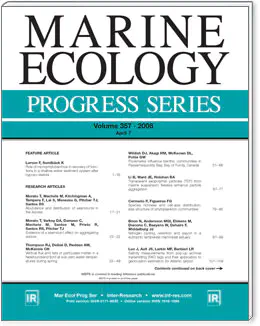Facilitation in the low intertidal: Effects of an invasive species on the structure of an estuarine macrozoobenthic assemblage

Abstract
The Asian clam Corbicula fluminea (Müller, 1774) has been recognized as one of the most important invasive alien species in aquatic ecosystems and may have significant ecological and economic impacts. Recently, the presence of C. fluminea was associated with changes in benthic and epibenthic fauna. In this study, we aimed to understand the mechanisms underlying the effects of C. fluminea on an estuarine macrozoobenthic assemblage using a manipulative experiment. We used 5 different treatments (control, rock, closed, live, open), which were placed in a low sandy intertidal soft bottom area in the Minho estuary (NW Iberian Peninsula) for 2 months. We found that the presence of live and open empty shells of C. fluminea had positive effects on the density, biomass and species richness of macrozoobenthos, specifically on species belonging to Annelida, Mollusca and Crustacea. Our results may be explained by 2 main mechanisms: (1) the production of feces and pseudofeces by C. fluminea, which increases organic matter content and food resources for some macrozoobenthic species; and (2) ecosystem engineering activities by C. fluminea, which can create conditions for the establishment of other species via shell production and bioturbation in the sediments.